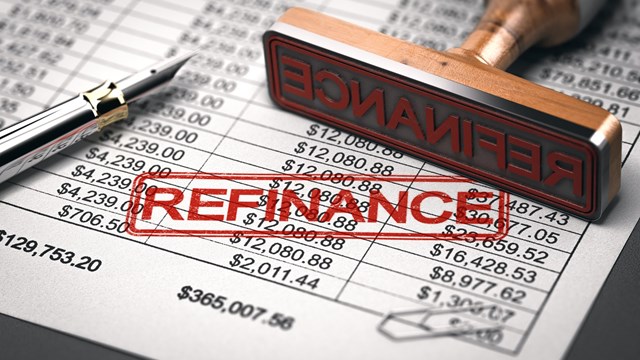The financing of your co-op's underlying mortgage is one of the most significant factors in the fiscal
integrity of your building. The size of the mortgage and corresponding monthly payments have a significant impact on the value of each individual unit. The recent growth in the co-op lending market, with many new players entering the field, and the advent of a more fluid secondary market for co-op mortgages, has given co-ops the opportunity to tailor their loans to fit the exact needs of the building.
When your current underlying mortgage needs to be refinanced whether it is because a balloon payment is coming due, the building needs funds for capital improvements or interest rates have dropped significantlythe board should take the time to study all of its options. It is important for the board of directors to work with a professional mortgage broker who can educate, inform and advise the board on what refinancing arrangement would best satisfy the building's needs in terms of its financial condition, long-term budget, etc. Beware the broker who attempts to sell you a single product and convince you that it suits your needs.
Sources of underlying cooperative mortgages include two types of lenders: the primary market and the secondary market. The primary mortgage market is comprised of savings banks and commercial banks. They raise their funds through the deposits of their customers. The secondary market consists of insurance companies, pension funds and government funds such as the Federal National Mortgage Association (known as Fannie Mae) and the Federal Home Loan Mortgage Corporation (known as Freddie Mac). The secondary market's source of funds is through insurance premiums, Wall Street and the securitization of Mortgage Backed Securities. Because the secondary market has a lower cost of funds, it is able to offer lower interest rates to the borrower.
Determining Interest Rates
There are four primary components that determine the interest rate a borrower pays on a loan: 1) the lender's cost of funds; 2) administrative overhead; 3) risk factor; 4) profit. Lenders are in the business of lending money to make a profit; their primary concern is safety of principal. Because the safest loan for anyone to make is in US Treasuriessince they are backed by the US Government, which has never defaulted on any of its loansthe yield of US Treasuries serves as a barometer for all other interest rates. When a lender chooses to lend money to anyone but the US Government, it will demand a premium in the form of higher interest rates to compensate it for the additional risk being undertaken.
For example, if Blue Chip pension fund agrees to lend your co-op $10 million, it will price the loan at a fixed premium (spread) over the comparable US Treasury. For a five-year loan it will price it over the five-Year US Treasury, which is currently trading at about 5.7 percent. For a 30 year loan it will price it over the 30-year US Treasury, which is currently trading at about 6.30 percent.
Another important factor in determining the interest rate of a loan is how long you are borrowing the money for. When you lend money to a bank in the form of a Certificate of Deposit, the longer you commit to keeping your money with the bank, the more you will expect to be compensated (ie: the higher the interest rate). In the same way, a len ffb der will charge a higher interest rate for a 30-year loan than for a 15-year loan. If the interest rate is significantly higher for the longer-term loan, it may not pay for the building to take that option.
Long Term or Short Term?
A short-term loan, from five to seven years, offers the advantage of short-term savings. But you will be gambling on where interest rates will be when this short-term mortgage matures. On the other hand, if you choose a long-term loan, say 20 or 30 years, and rates drop, you will not be able to take advantage of the lower rates, because these loans cannot be refinanced without a hefty prepayment penalty.
If your co-op must reduce its maintenance in order to maintain values or improve unit sales, a short-term mortgage should be given serious consideration. On the other hand, if your co-op can afford to pay a little more for the long-term security of a low rate, a long-term loan should be considered.
In addition to the payment of interest on the money you borrow, lenders usually require that throughout the life of the loan you make monthly payments towards reduction of principal. This reduction of principal is known as amortization. A 30-year amortization schedule means that the monthly contributions to reduction of principal are based on a 30-year schedule, so that the loan amount will be reduced to zero at the end of 30 years. A 20-year amortization schedule means that the principal of the loan will be paid off in 20 years. The longer the loan term, the more interest you pay with each monthly payment. And since the interest portion of your payments is tax deductible, a longer-term loan means a higher monthly tax deduction on your maintenance paymentsanother consideration to take into account when weighing the building's options.
On the other hand, reduction of principal increases the value of each individual unit and can lead to lower maintenance fees. A smaller mortgage in the future will be easier and cheaper to arrange, because a lower loan-to-value ratio will be more desirable to a lender, resulting in a lower interest rate. And lower mortgage payments mean lower maintenance fees.
Locking in Rates
The borrower may have the option of locking in the interest rate upon application or waiting to lock in at time of commitment or loan closing, depending on where you believe interest rates are headed. Many cooperatives have watched interest rates drop precipitously over the last eight months, but have decided to wait for further savings. Unexpectedly, rates have increased over the past six weeks and these co-ops are now scrambling to secure financing before rates climb even further.
Given the enormous fluctuation in the interest rate marketplace these days, borrowers are advised to lock in interest rates immediately upon application. Otherwise, what may appear to be a low interest rate loan can turn out to be an expensive gamble on the future direction of interest rates.
Before considering any type of refinancing, begin with an assessment of the building's capital improvement needs for the long run, and its financial condition. Next, consult with your team of professionals: the building's accountant, lawyer and managing agent. Then hire a reputable mortgage broker to help the board navigate the rough and challenging waters of refinancing.
Mr. Alevy is a senior vice president with Bankers Capital, a firm that specializes in obtaining underlying cooperative mortgages through the secondary market.







3 Comments
Leave a Comment